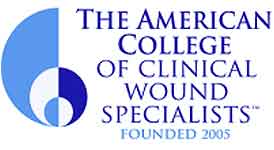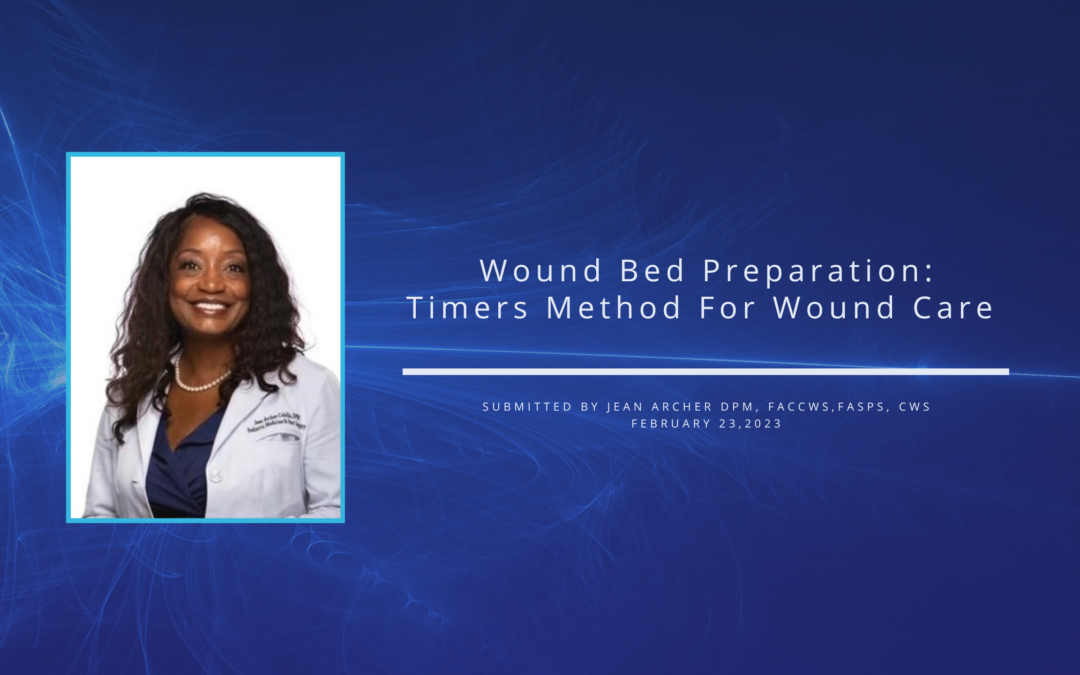Timers Method For Wound Care
Submitted on February 23, 2023 by Jean Archer DPM,FACPM FACCWS, FASPS, CWS

The term Time is a very familiar and useful acronym that pertains to clinical categories related to wound assessment, management and wound bed preparation. It is a term that was created by a team of 10 wound care clinicians in 2002. It was an important and useful acronym in that it provided a framework for managing the chronic wound. Wound healing requires the conditions inherent in an acute wound to heal and so this concept is most useful in achieving that goal. Timers is a newer acronym and some wound care clinicians may not have heard of this as of yet. This discussion on the TIME acronym appears in their article, “Wound bed preparation: a systematic approach to wound management.” It appeared in the Journal of Wound Repair and Regeneration in March 2003 . In 2018, a consensus panel of wound care clinicians agreed that the current framework, TIME, needed to be updated with two additional components to further promote the healing of these hard to heal wounds. The consensus panel published their new recommendations in 2019 , ”Implementing TIMERS: The race against hard to heal wounds.” This was published in the Journal of Wound Care. There were additional insights added to each category of the TIMERS wound care acronym below. The goal is to heal the wound as quickly and painlessly as possible.
Here is what TIMERS stands for:
T- Tissue Management
Question to ask:
How do I remove non-viable tissue using the various debridement methods.
Removing non- viable tissue is crucial t the healing of a chronic wound.
- Inflammation and Infection
Question to ask:
Is there a presence of infection in the wound? If so what bacteria is present? Is there biofilm?
- M- Moisture Balance
Question to ask:
Is the wound to dry?
Is the wound to moist?
Maintaining moisture balance is important to the healing of a wound.
Wounds that are too moist, need excess exudate to be taken away. Wounds that are dry, need moisture added.
E-Epithelial Edge
Question to ask:
What can you do to facilitate the advancement of the wound edge.
Question to ask:
Is it keratotic?
Is it hyberbole?
R- Regeneration and repair of tissue
Question to ask:
How can you reduce proinflammatory cytokines in the wound?
Possible answers: Stem cells, growth factors and oxygen.
S-Social Factors
It is important to assess the patient and care givers level of health literacy in regards to their disease as this may also impact their ability to heal . Patient education and the applicable methods of facilitating the learning process will go help in promoting wound healing. Other social factors that may impact their care include conditions such as psychiatric disorders, cognitive impairment, dementia, insurances denying coverage for supplies/equipment ,financial constraints and transportation issues.

Dr. Archer is a board -certified Podiatrist at the University of Rochester Medical Center with a background in wound care and podiatric surgery. She is a board member of ACCWS.
Reference:
Timers wound care: Strategies for wound bed preparation published July 29, 2020 written by Carole Jakucs






